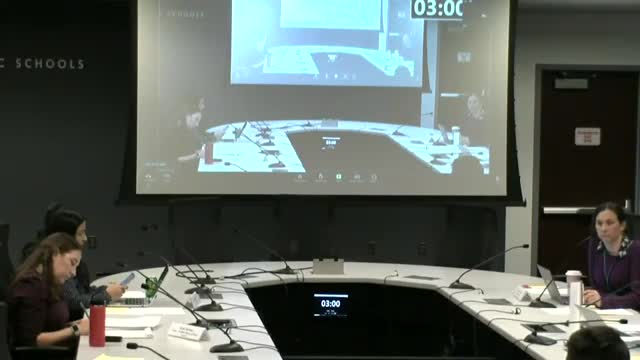Community discussions set to reshape Parklawn school boundaries
October 18, 2024 | FAIRFAX CO PBLC SCHS, School Districts, Virginia
This article was created by AI summarizing key points discussed. AI makes mistakes, so for full details and context, please refer to the video of the full meeting. Please report any errors so we can fix them. Report an error »

In a recent government meeting, discussions centered around the boundary revisions for Parklawn and Coats elementary schools, highlighting the need for community engagement and clarity in decision-making processes. Board members expressed concerns about the implications of previous decisions regarding school boundaries, particularly in relation to the Justice pyramid, which includes seven elementary schools.
One board member emphasized the importance of creating a dedicated space for the Parklawn community to provide feedback, suggesting that this could enhance the overall project by integrating local insights into broader planning efforts. The conversation underscored the challenges posed by the current reliance on temporary classrooms at Parklawn, with members advocating for a focused discussion to address these significant issues.
Dr. Anderson clarified that there was no opposition to the community discussions, but rather a need for better understanding of the decisions made earlier in the year. The board acknowledged that the timeline for community conversations regarding Coats and Parklawn would align with a series of high school pyramid meetings scheduled from November to March. However, the exact timing for these discussions remains uncertain, with initial meetings having been postponed multiple times.
The board also discussed the potential for utilizing a hired consultant to streamline the boundary study process, suggesting that this could prevent duplication of efforts and ensure that the needs of both schools are adequately addressed. The amendment language proposed for the Capital Improvement Plan (CIP) indicated a focus on addressing capacity deficits and the number of temporary classrooms, with community scoping conversations anticipated in the fall and spring of 2024.
Overall, the meeting highlighted the complexities of school boundary adjustments and the critical role of community input in shaping educational infrastructure decisions.
One board member emphasized the importance of creating a dedicated space for the Parklawn community to provide feedback, suggesting that this could enhance the overall project by integrating local insights into broader planning efforts. The conversation underscored the challenges posed by the current reliance on temporary classrooms at Parklawn, with members advocating for a focused discussion to address these significant issues.
Dr. Anderson clarified that there was no opposition to the community discussions, but rather a need for better understanding of the decisions made earlier in the year. The board acknowledged that the timeline for community conversations regarding Coats and Parklawn would align with a series of high school pyramid meetings scheduled from November to March. However, the exact timing for these discussions remains uncertain, with initial meetings having been postponed multiple times.
The board also discussed the potential for utilizing a hired consultant to streamline the boundary study process, suggesting that this could prevent duplication of efforts and ensure that the needs of both schools are adequately addressed. The amendment language proposed for the Capital Improvement Plan (CIP) indicated a focus on addressing capacity deficits and the number of temporary classrooms, with community scoping conversations anticipated in the fall and spring of 2024.
Overall, the meeting highlighted the complexities of school boundary adjustments and the critical role of community input in shaping educational infrastructure decisions.
View full meeting
This article is based on a recent meeting—watch the full video and explore the complete transcript for deeper insights into the discussion.
View full meeting
